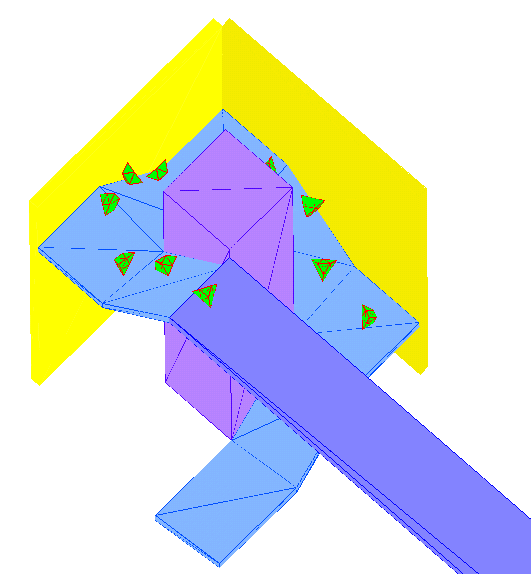 |
|
 |
Institute of Engineering and Computational Mechanics |
 |
Hybrid Simulation of Multibody Systems Consisting of Poured Small Particles |
 |
|
 |
 |
 |
 Research Research
|
 |
 |
|
Project Description

Start Animation
In this work the collective dynamical behaviour of many convex and non-convex
polyhedral bodies in space is of interest.
To be able to simulate a high
number of bodies, methods from Molecular Dynamics (MD) are frequently used.
Here these methods are combined with collision detection methods and contact
formulations adopted from Multibody Systems (MBS).
Originally in MD molecules are considered and it is the goal to describe
their interactions and their collective behaviour. These interactions depend
on macroscopic measurable properties of the materials, e.g. viscosity or
elasticity. In such systems, where the dynamical behaviour is calculated on
the scale of the molecules, a very high number of particles is investigated.
In order to simulate such a high number of bodies, in MD the molecules are
often modelled by rigid spheres. The material behaviour is then represented
by the forces that are acting between the bodies. In MD such forces can be
attractive forces like Van der Waals forces, but they can also be contact
forces that are applied to a colliding molecule pair. To calculate the forces
effectively, overlaps between the particles are accepted, and the value of the
force depends on the distance between the colliding bodies. Such methods
for the calculation of contact forces are also called constitutive methods.
The constitutive laws from MD are here applied to three dimensional solid
bodies of different shape.
Simulations of granular material or bulk solids are based on free bodies in
space. In the space a free body has six degrees of freedom. Then, the
equations of motion can be obtained easily taking into account three
elementary rotations for example the Kardan-angles and three translational
degrees of freedom. After neighbouring body pairs have been found the time consuming collision detection for polygonal convex or non-convex bodies can be accomplished.
For the colliding bodies contact forces have to be computed. To apply the
contact force to the bodies, the contact geometry has to be detected. For
spherical bodies, this contact geometry is quite simple, e.g. the normal contact
force simply acts in radial direction to
the surface of the body. Here, more complex geometries are considered and the
relevant surface part has to be found out. The resulting forces and moments
acting on each body must then be incorporated into the equations of motion.
Related Pages
Contact
|
|
|
|
|

